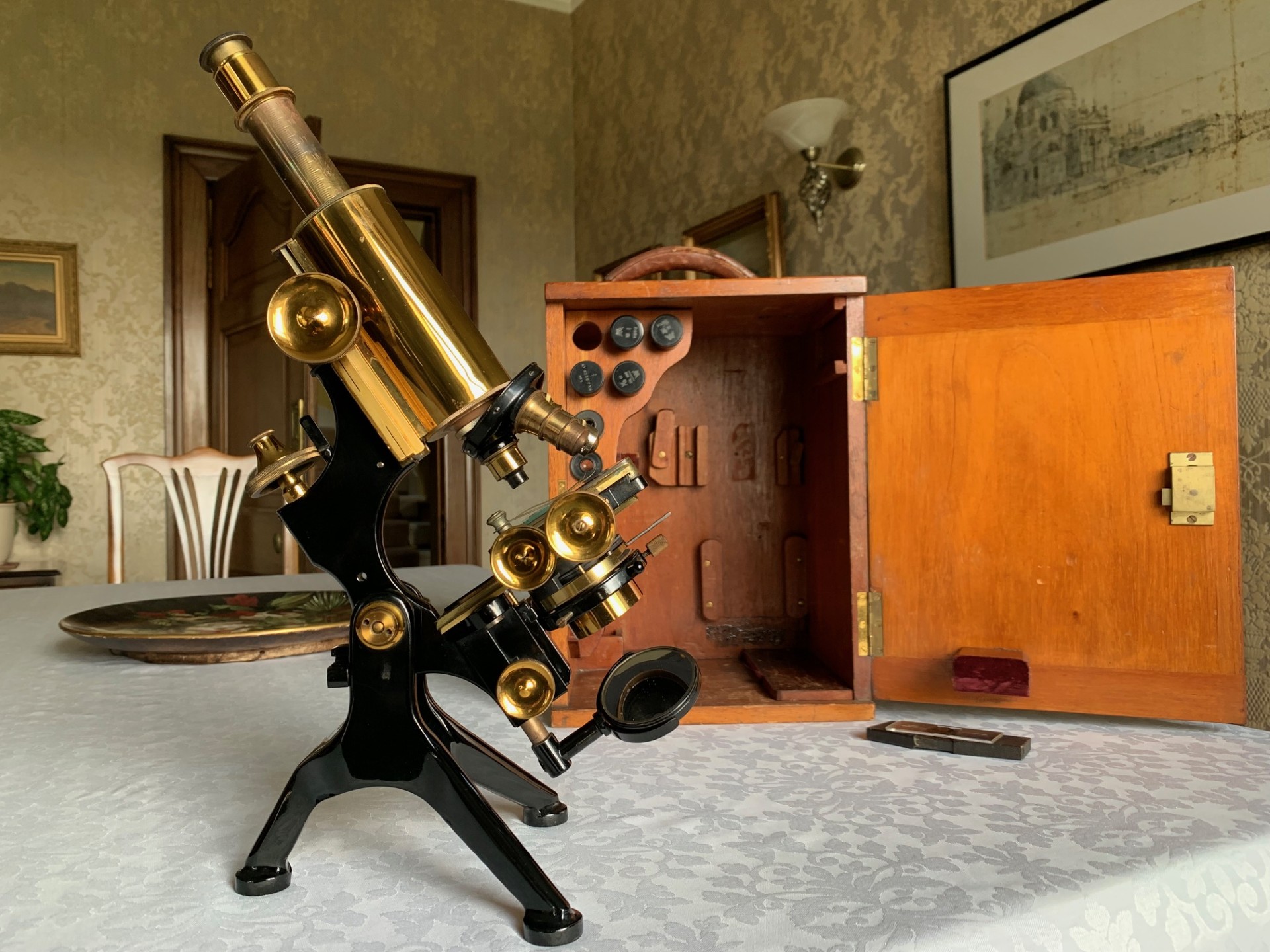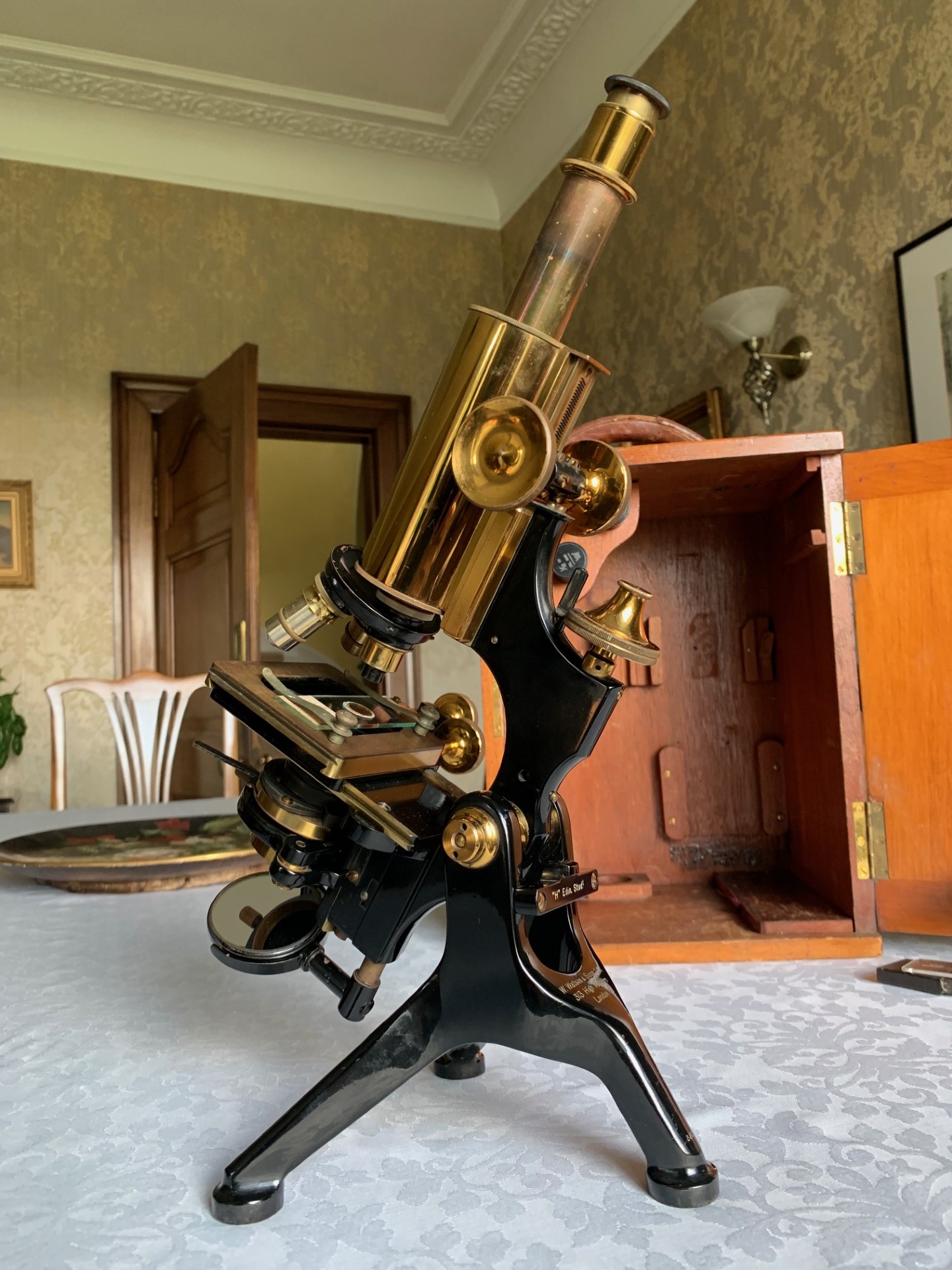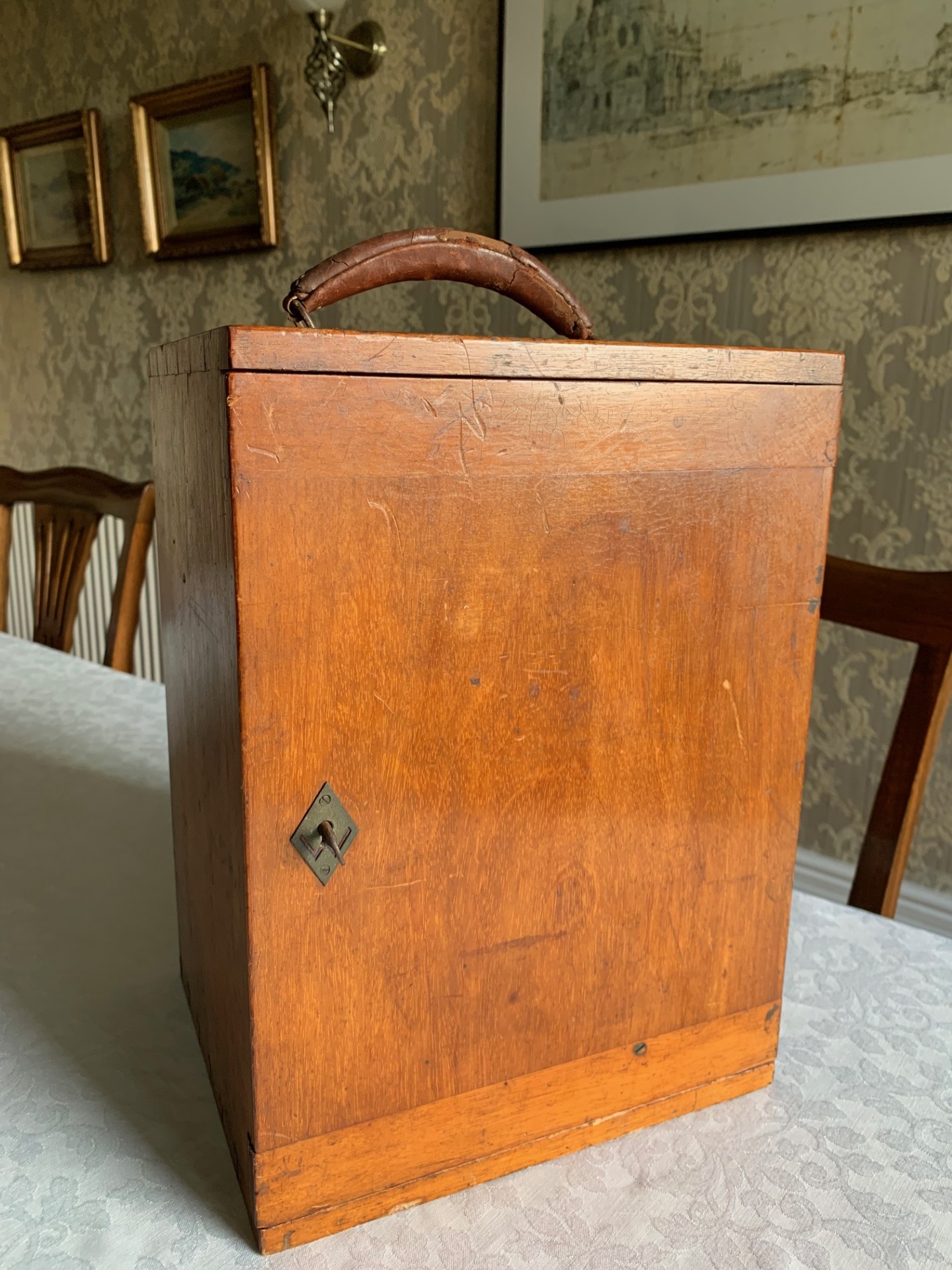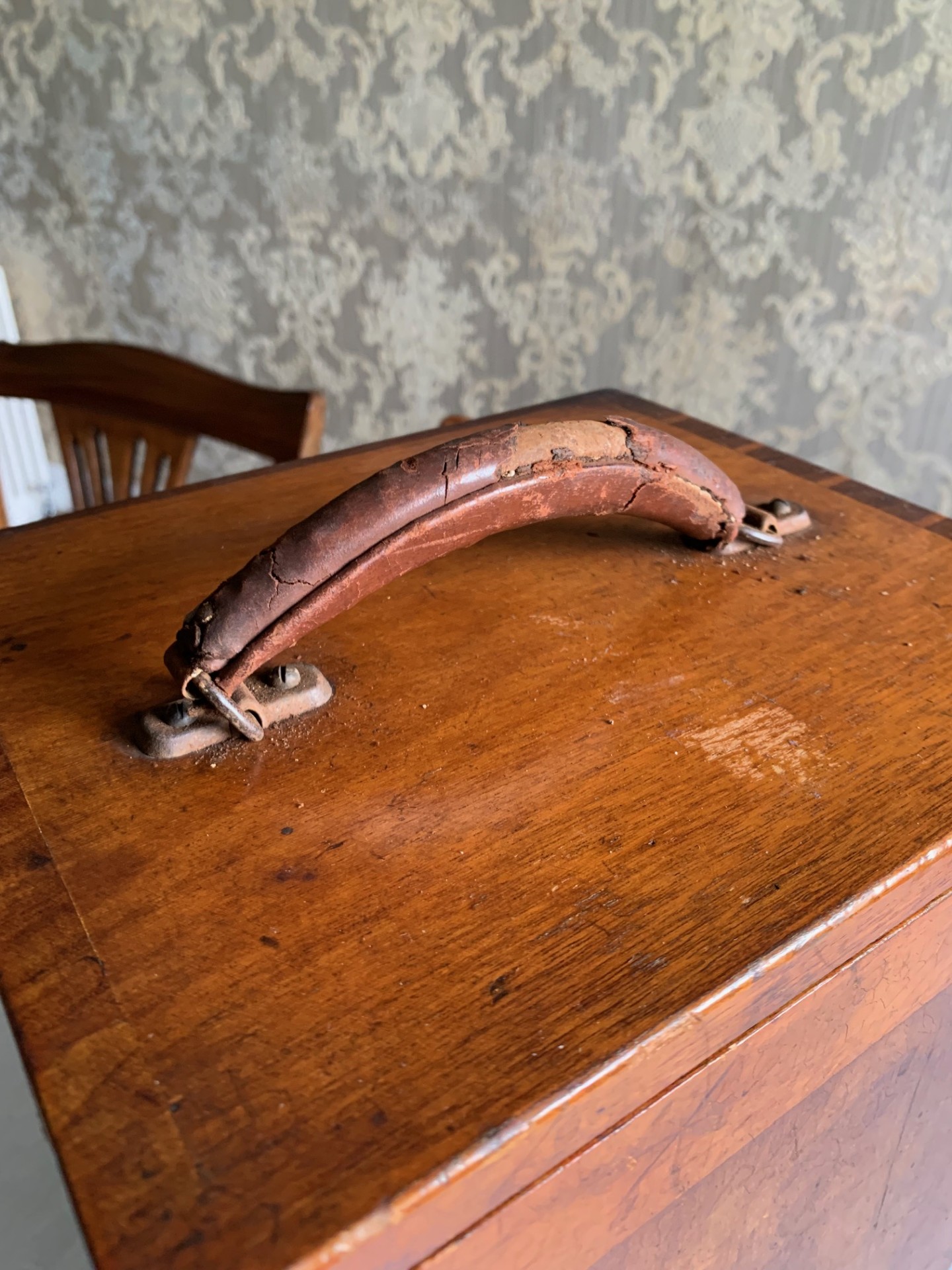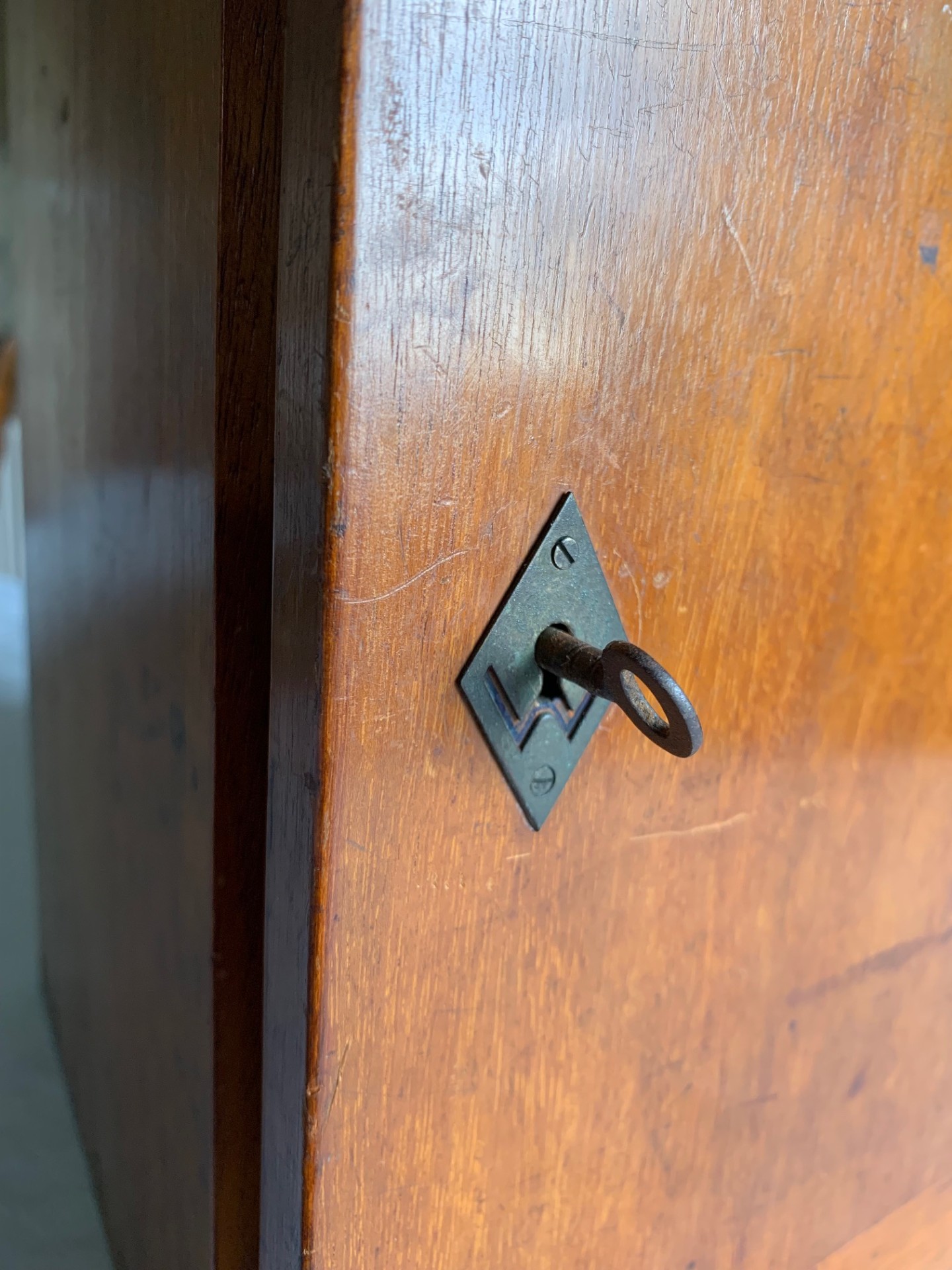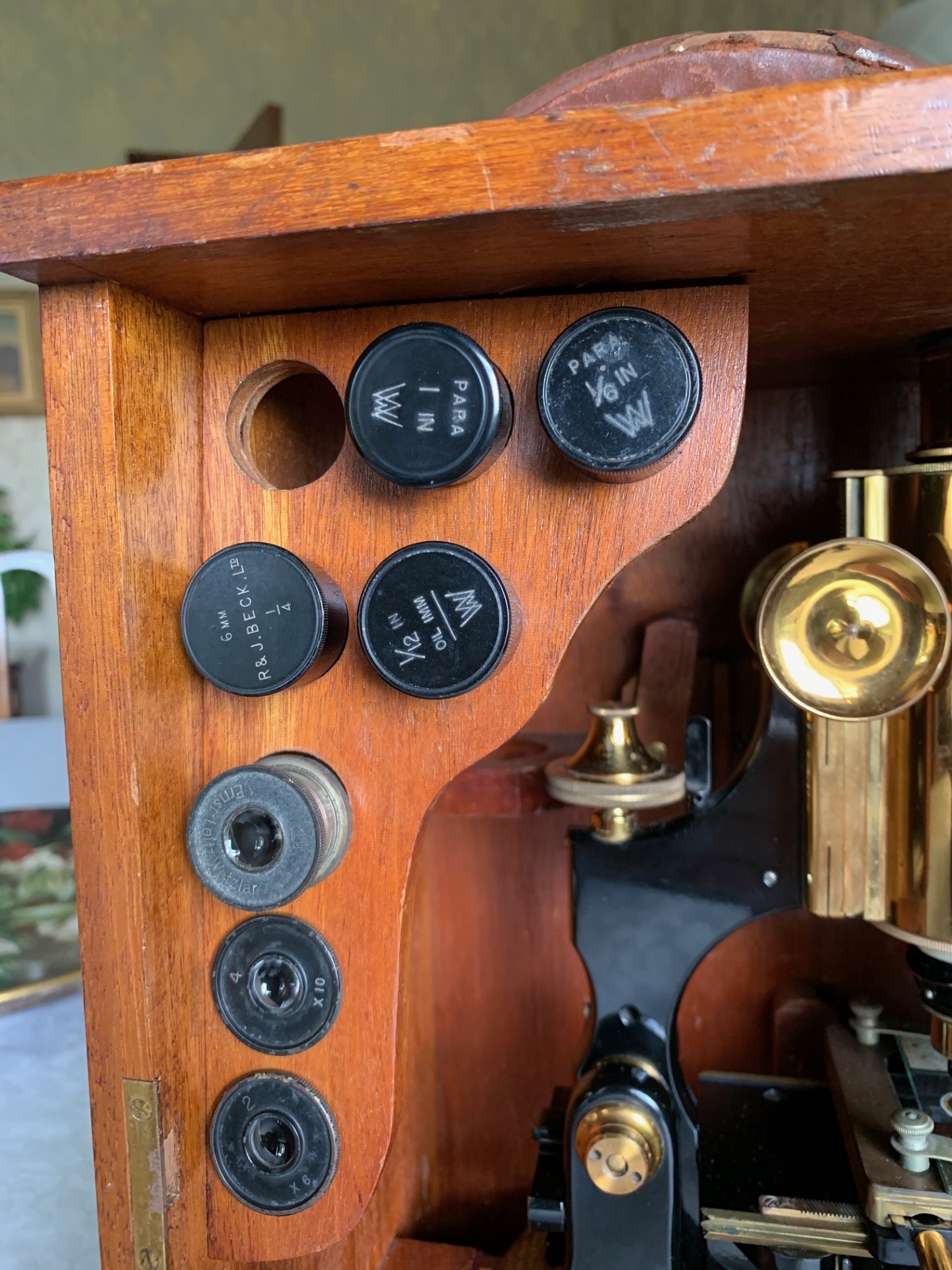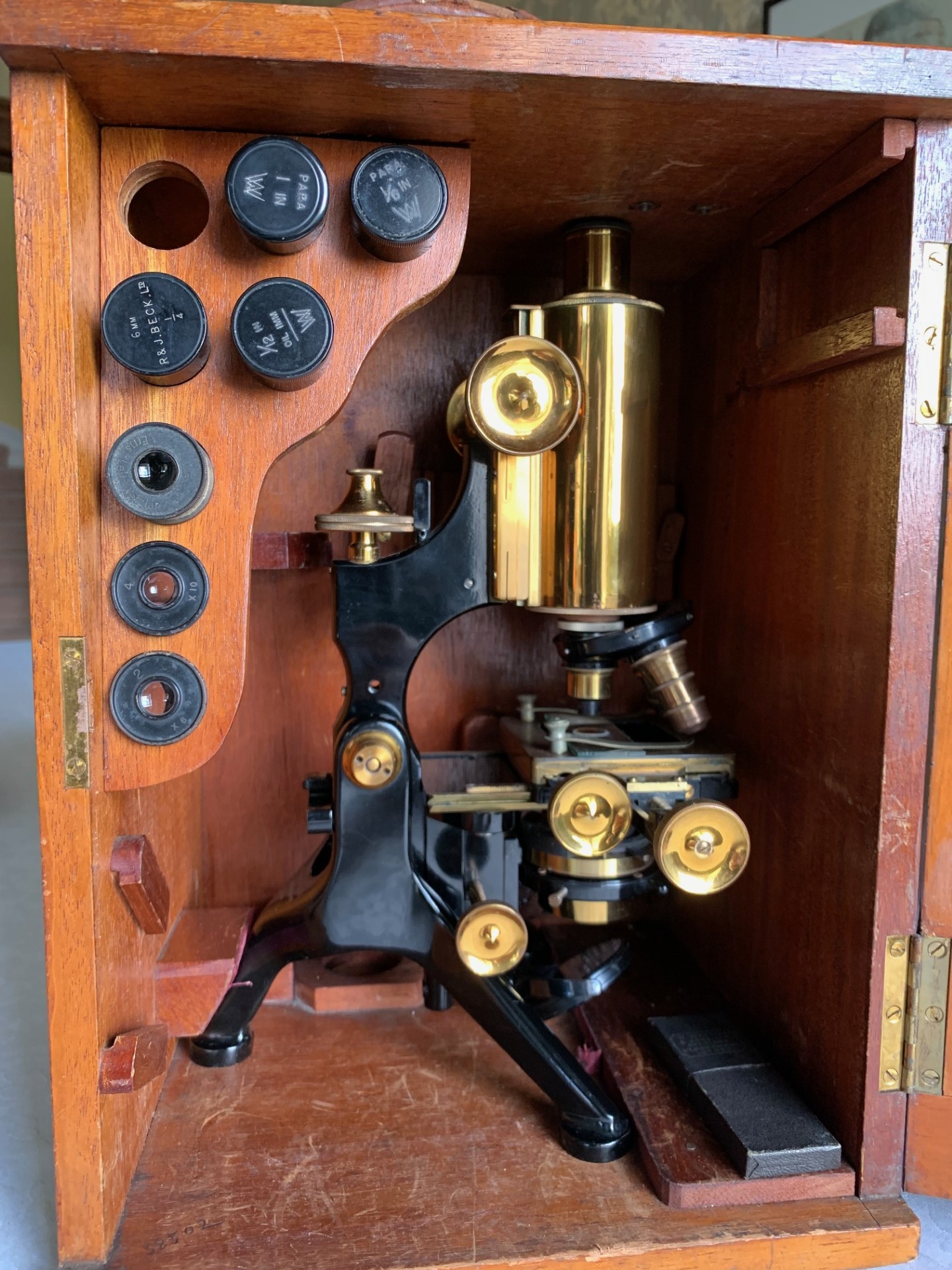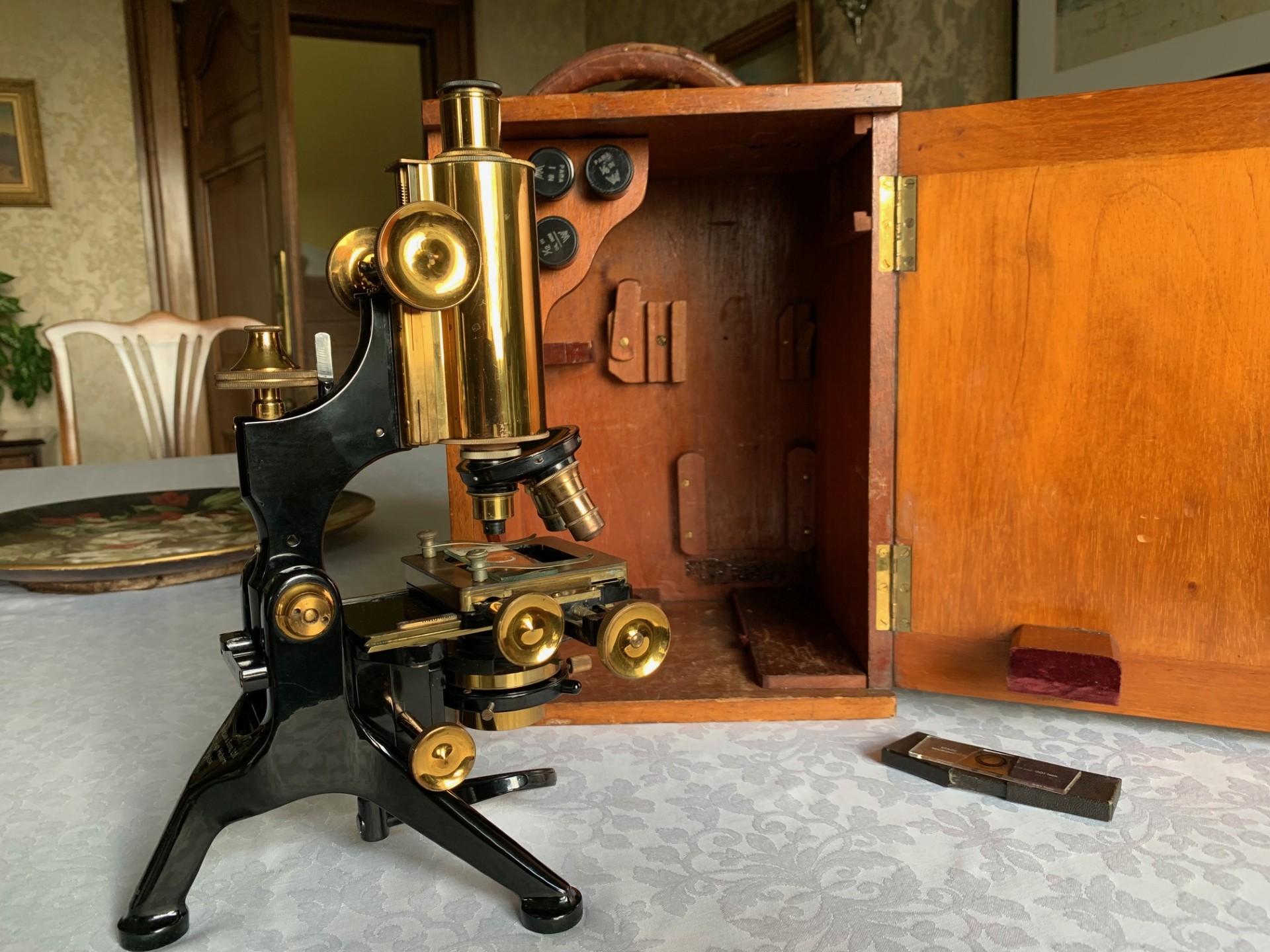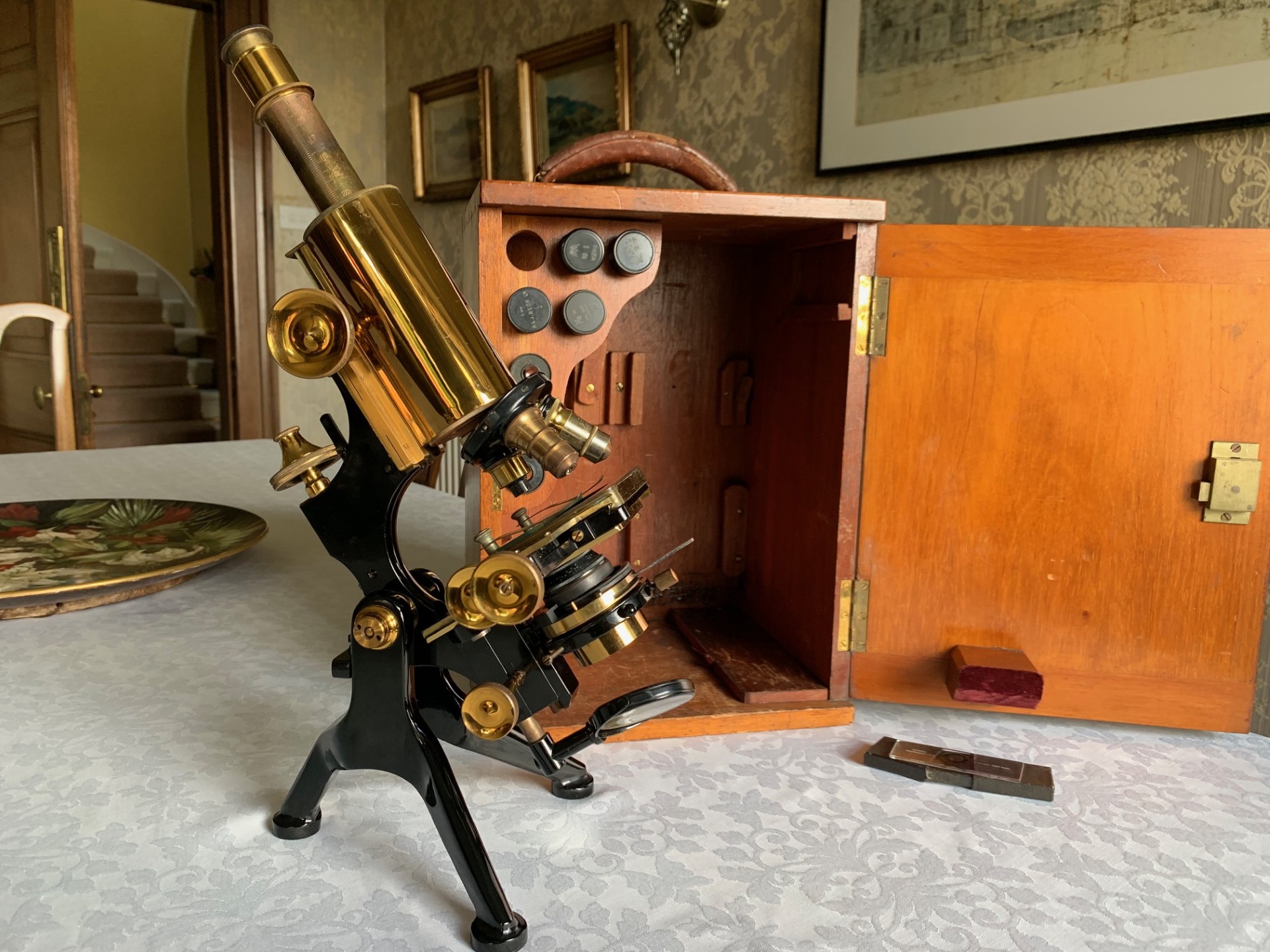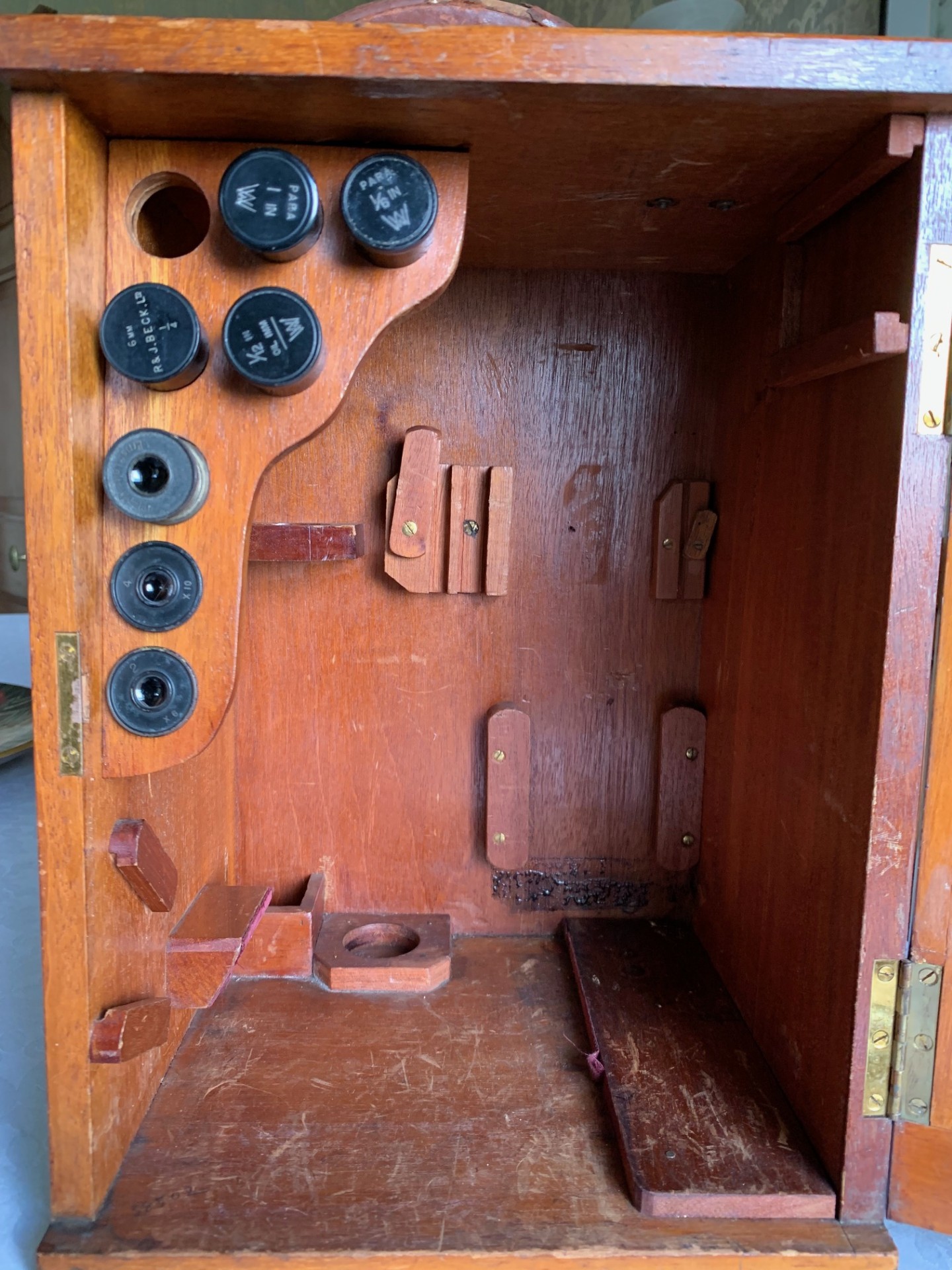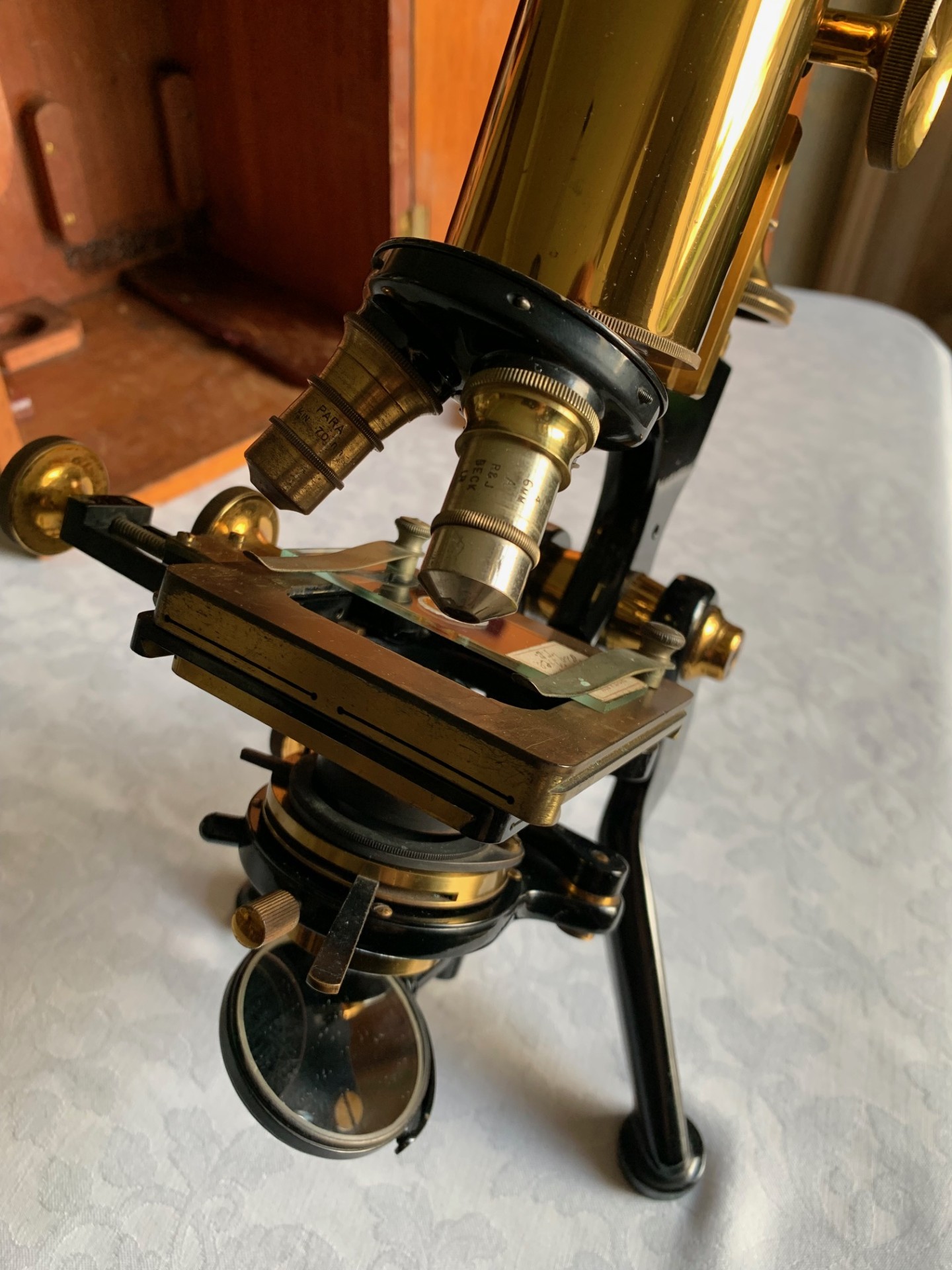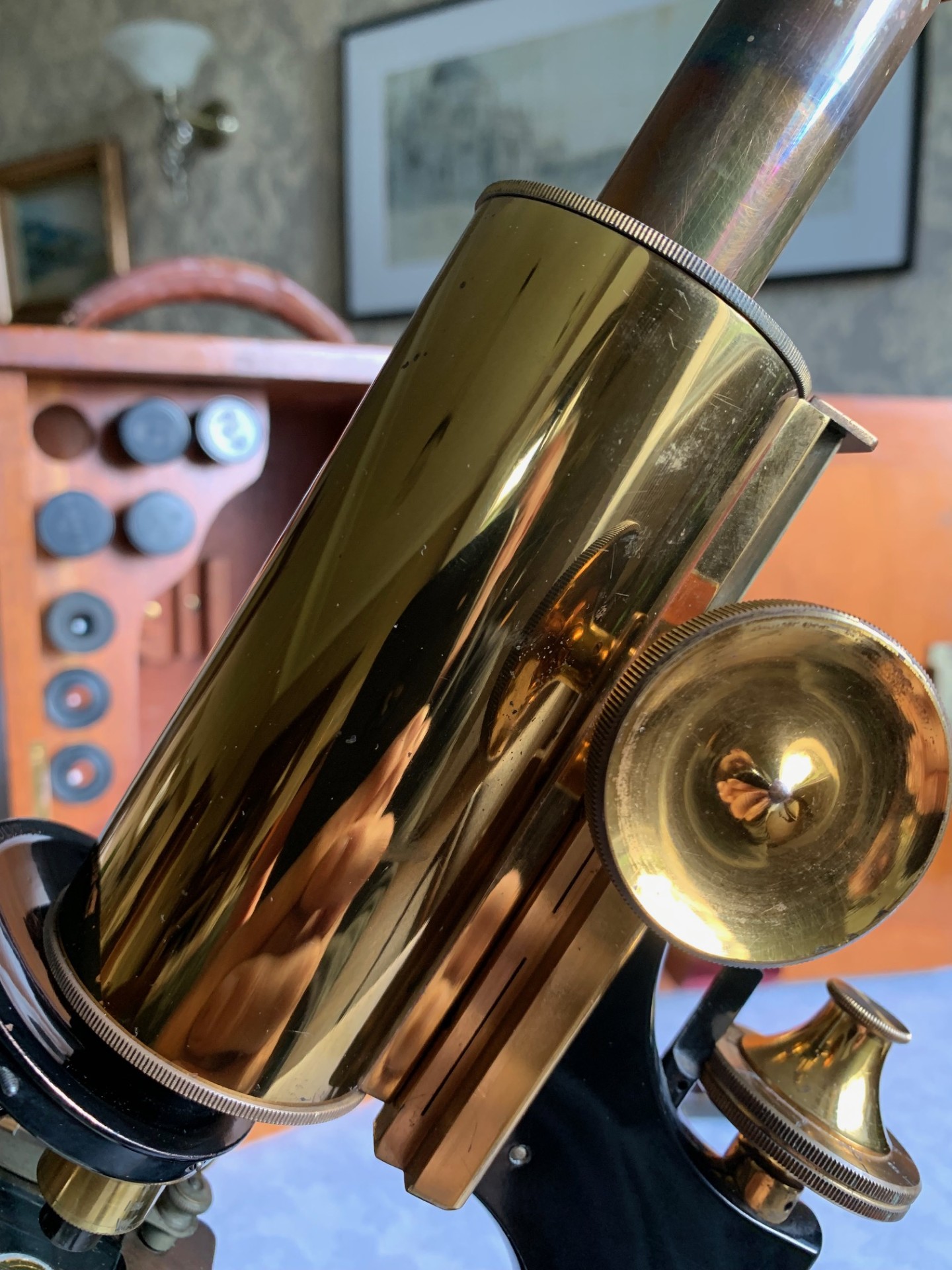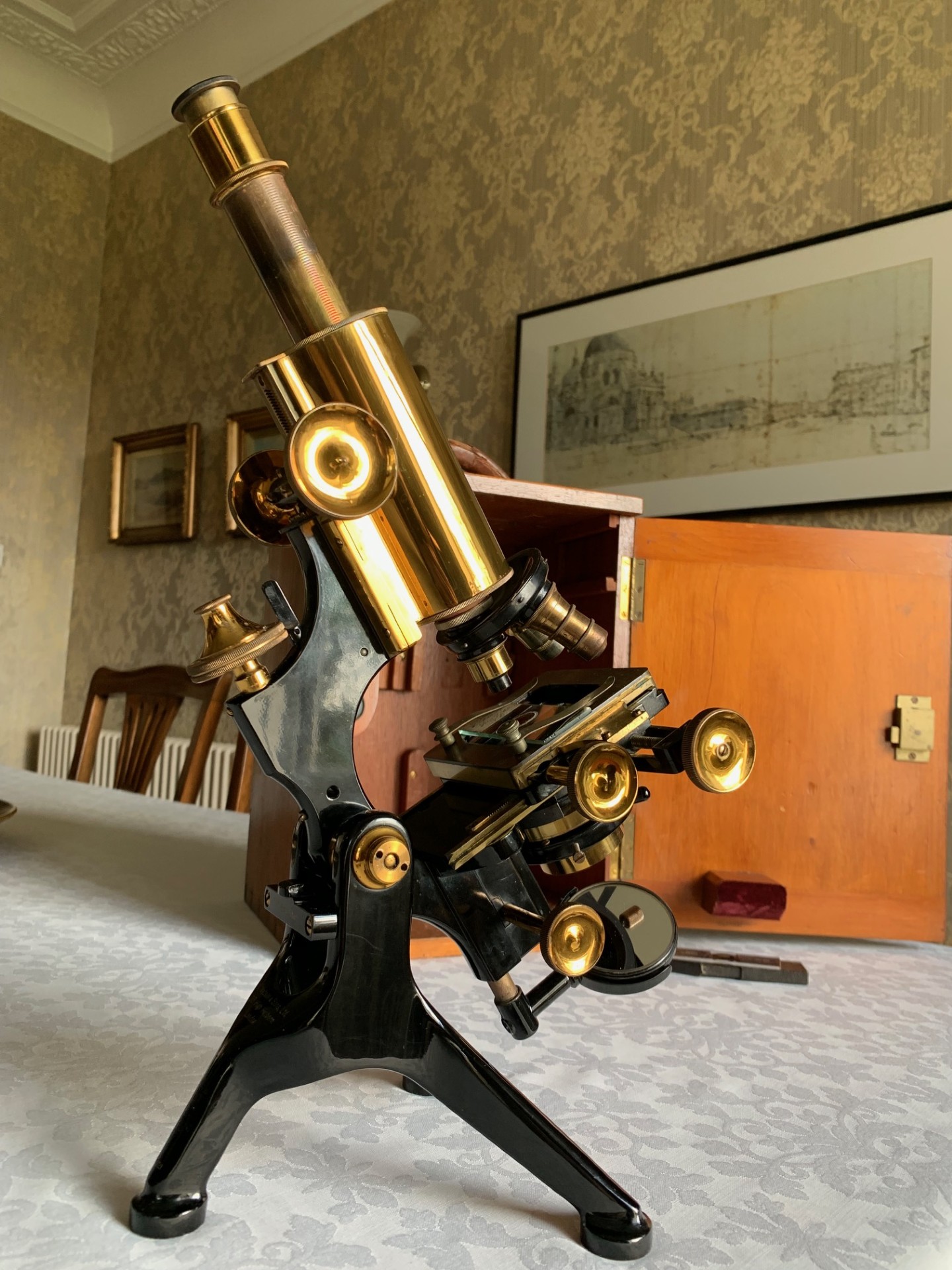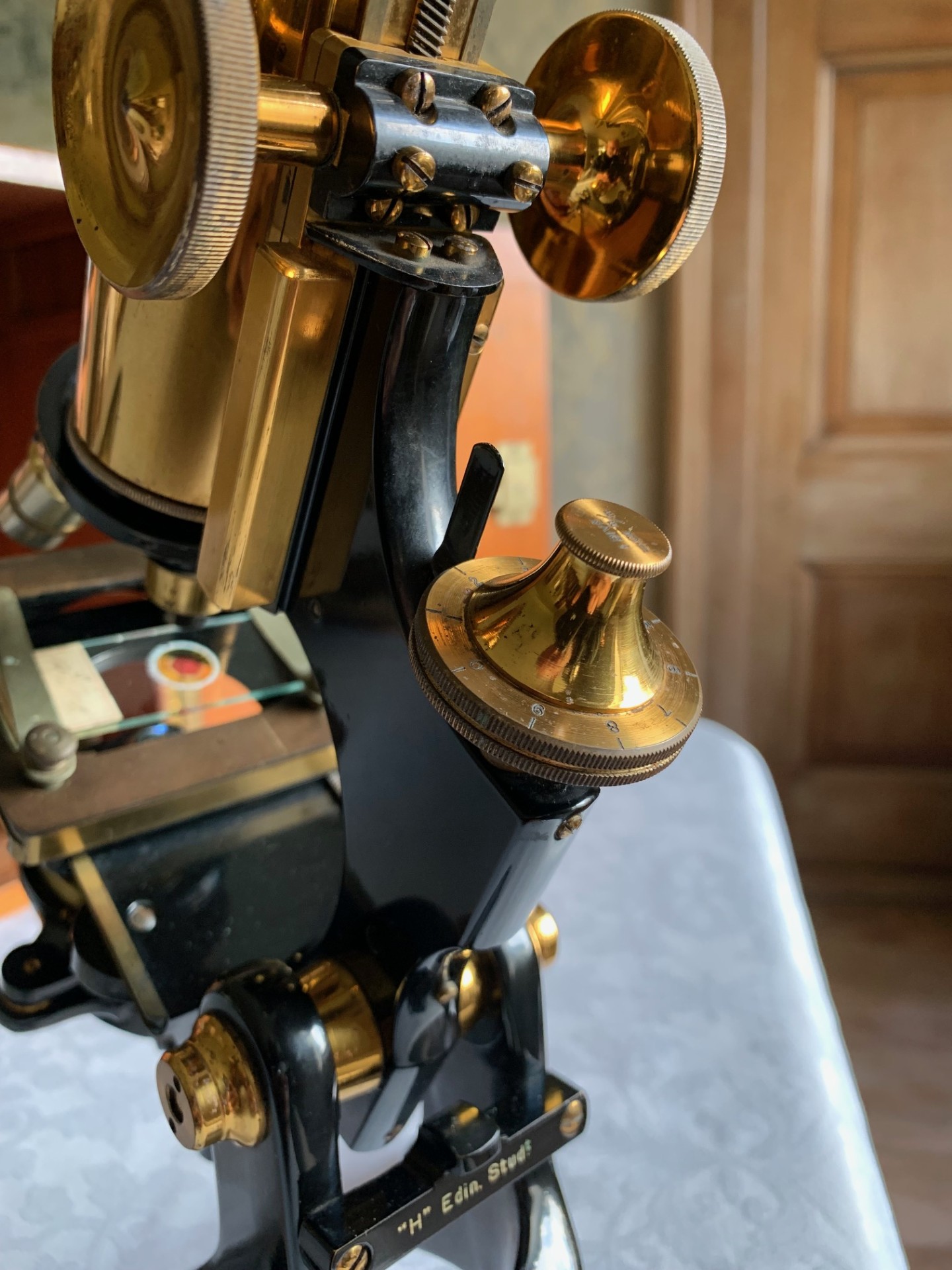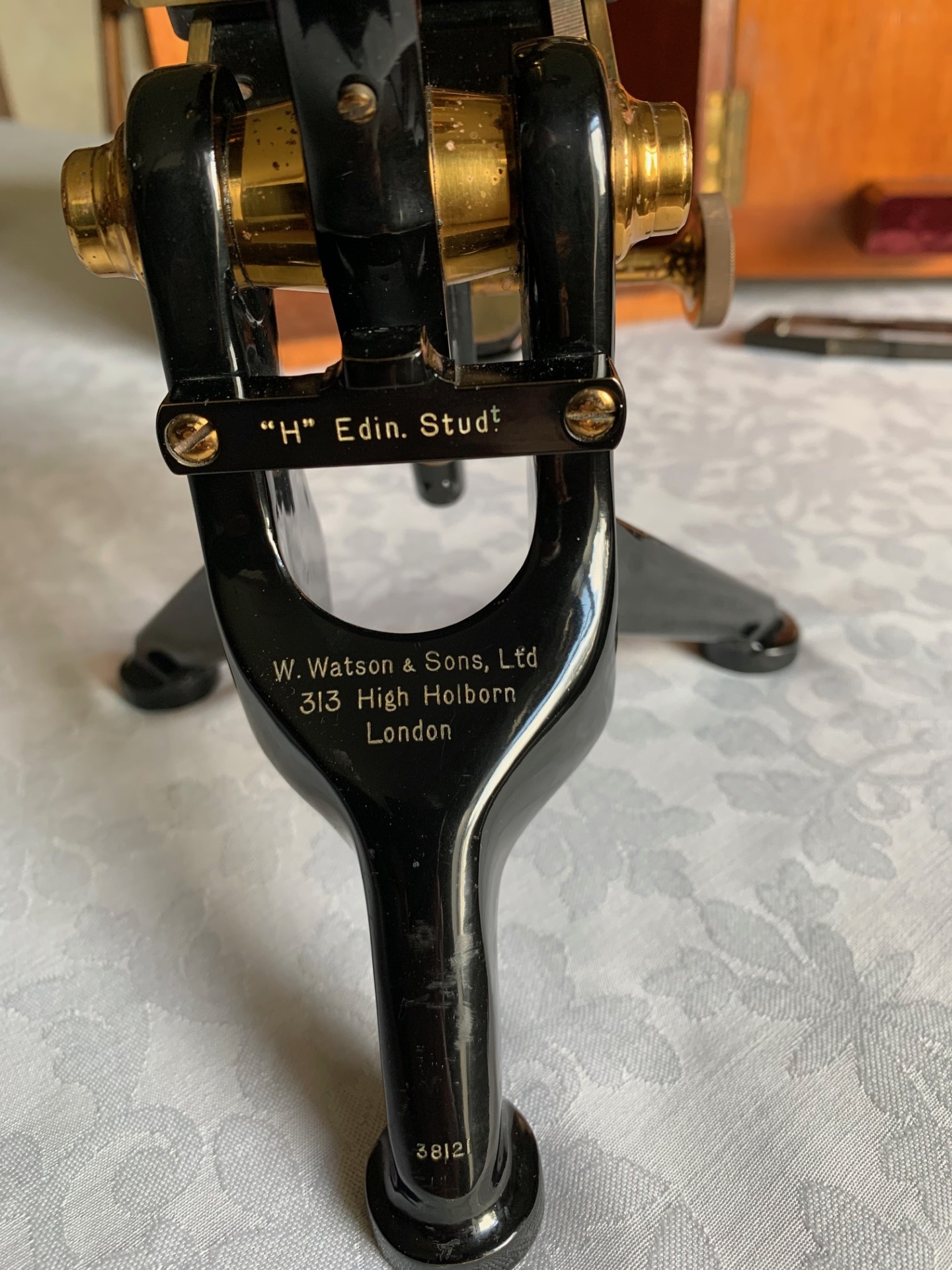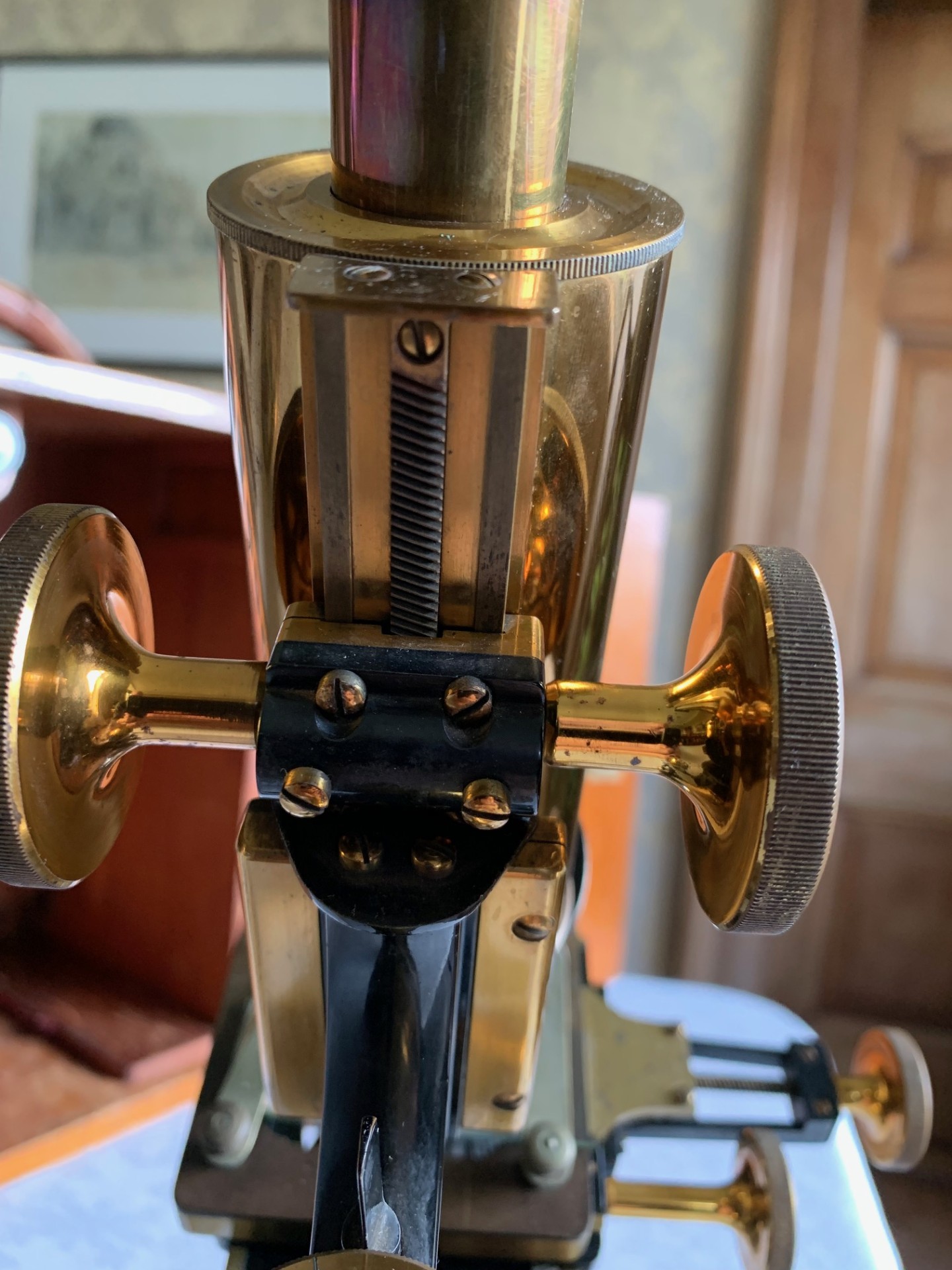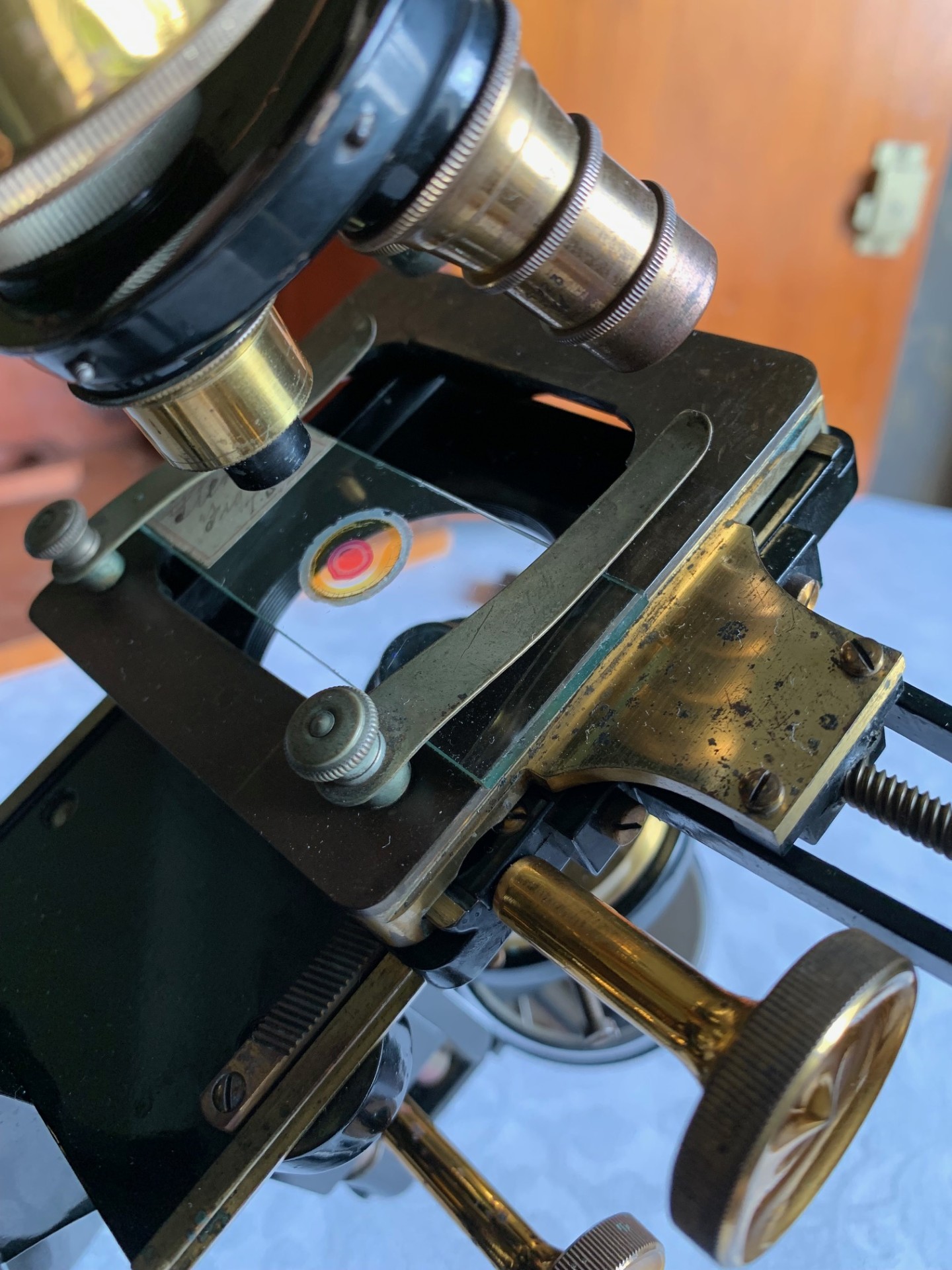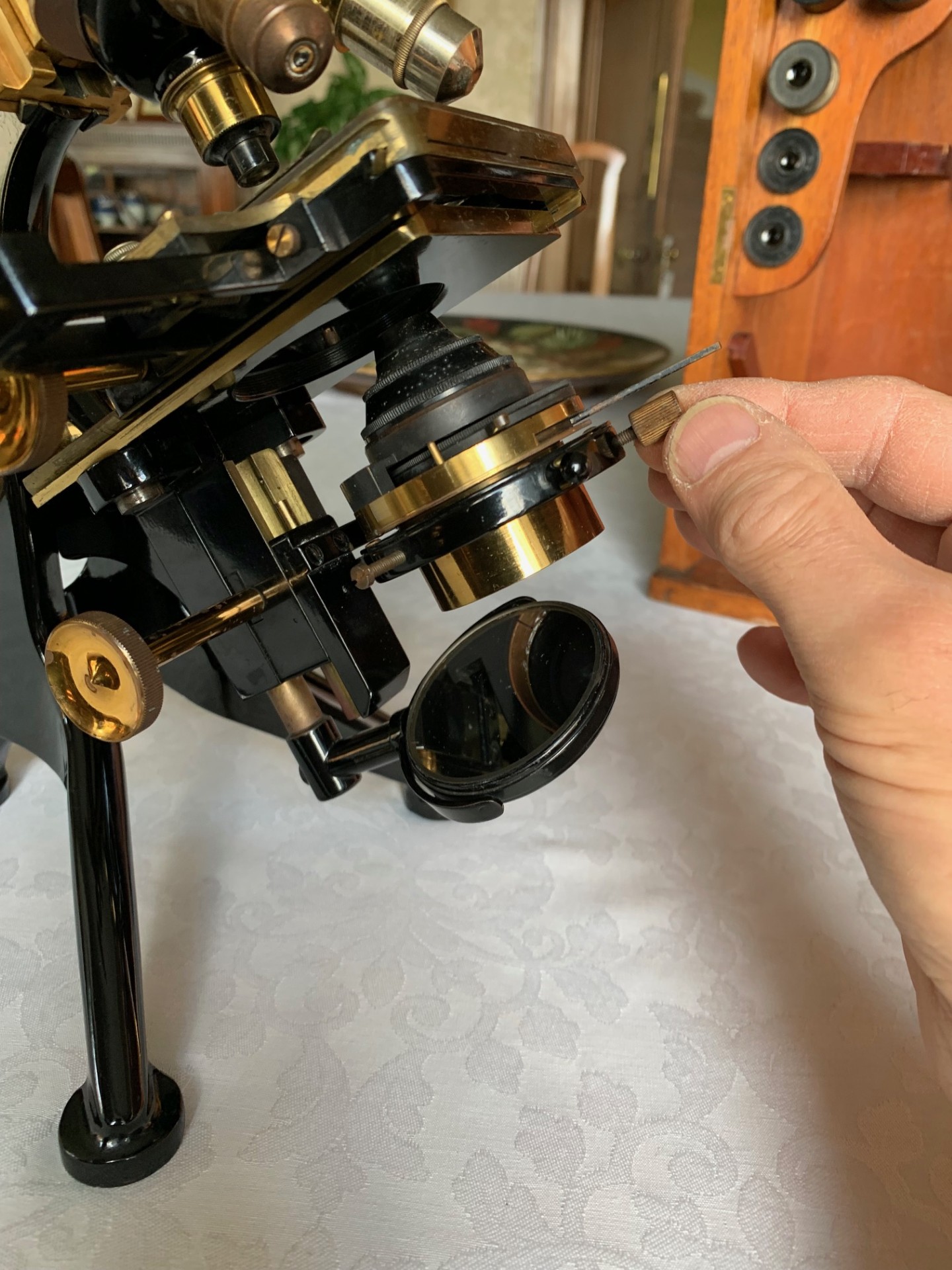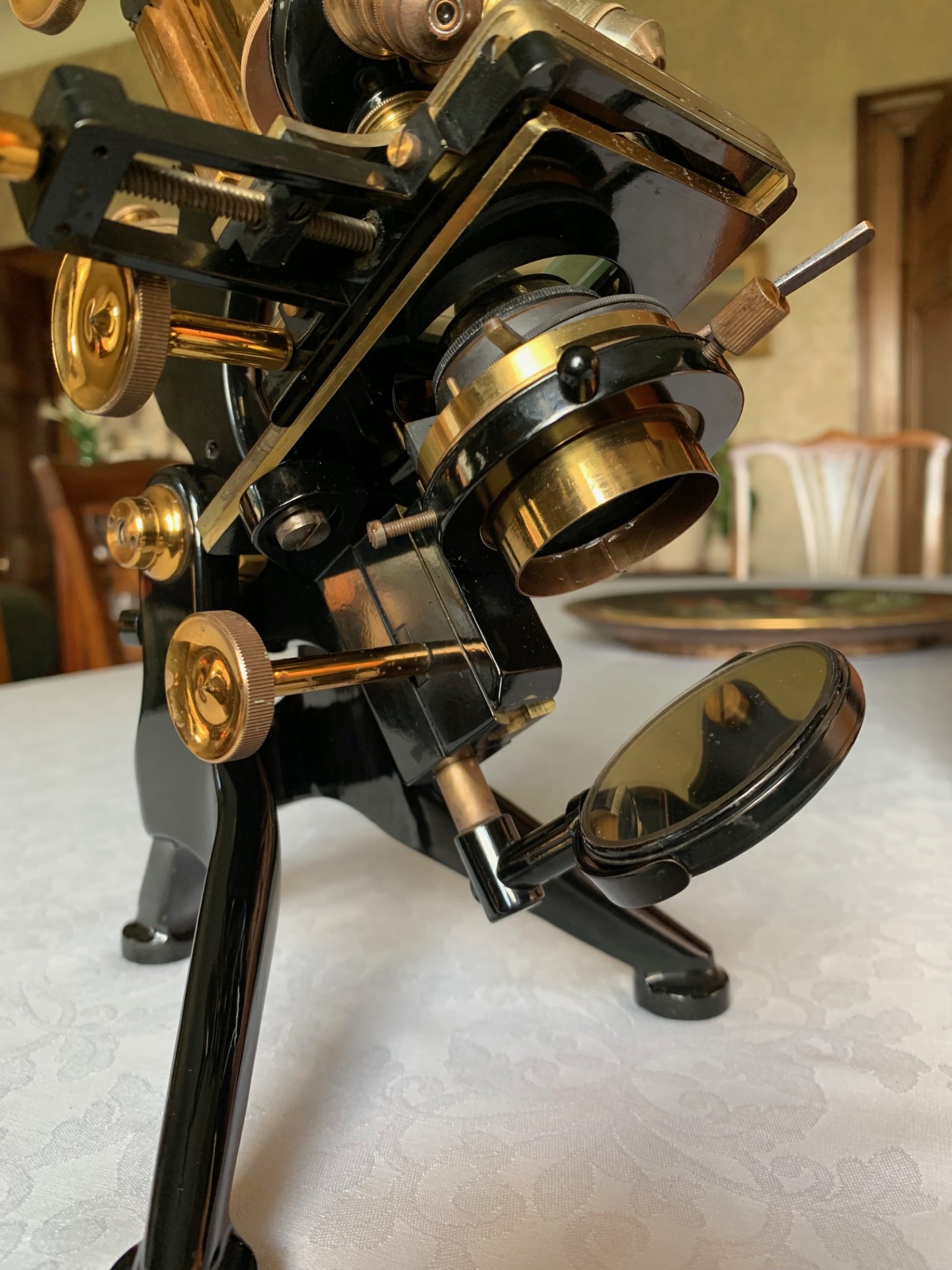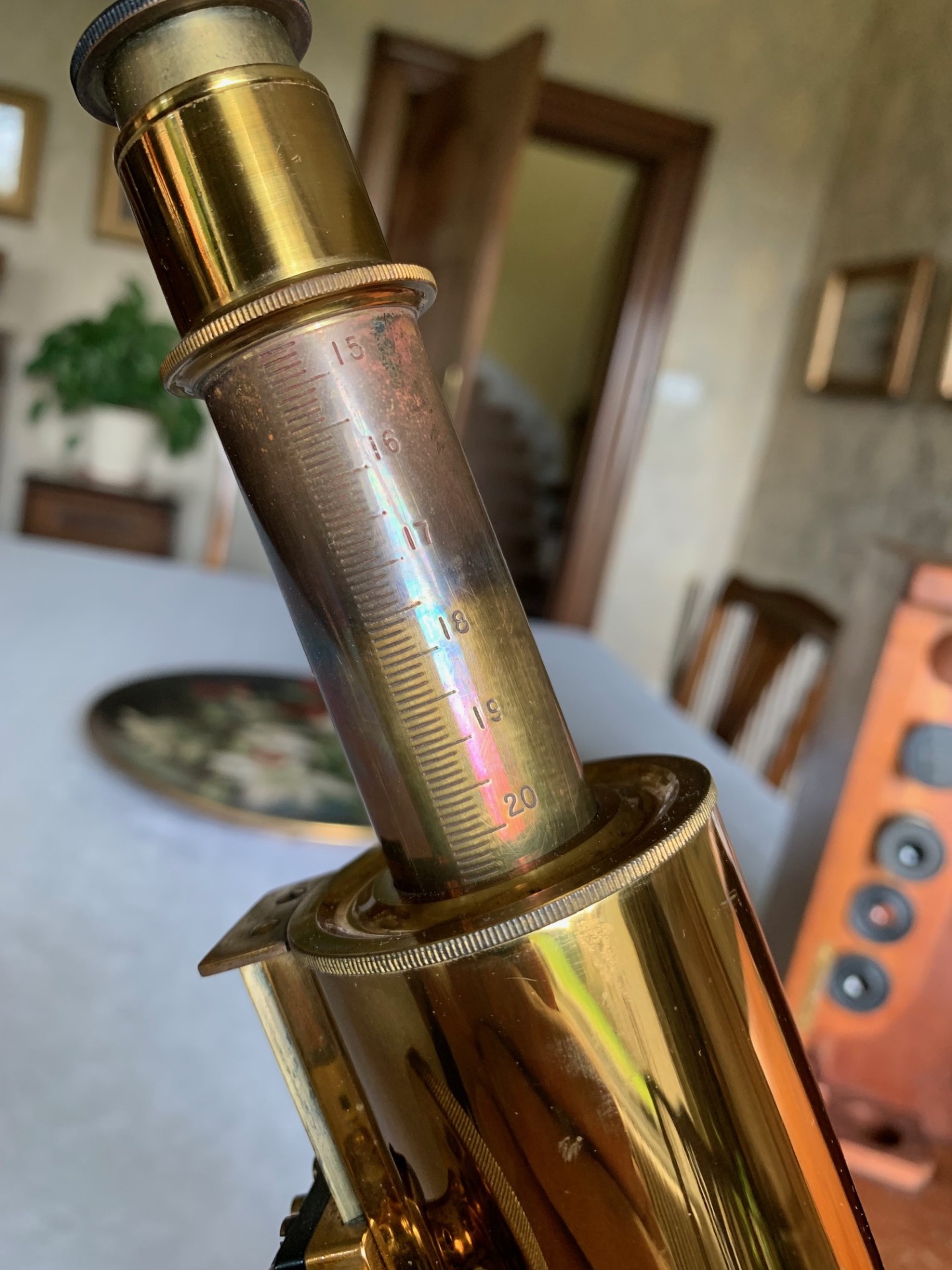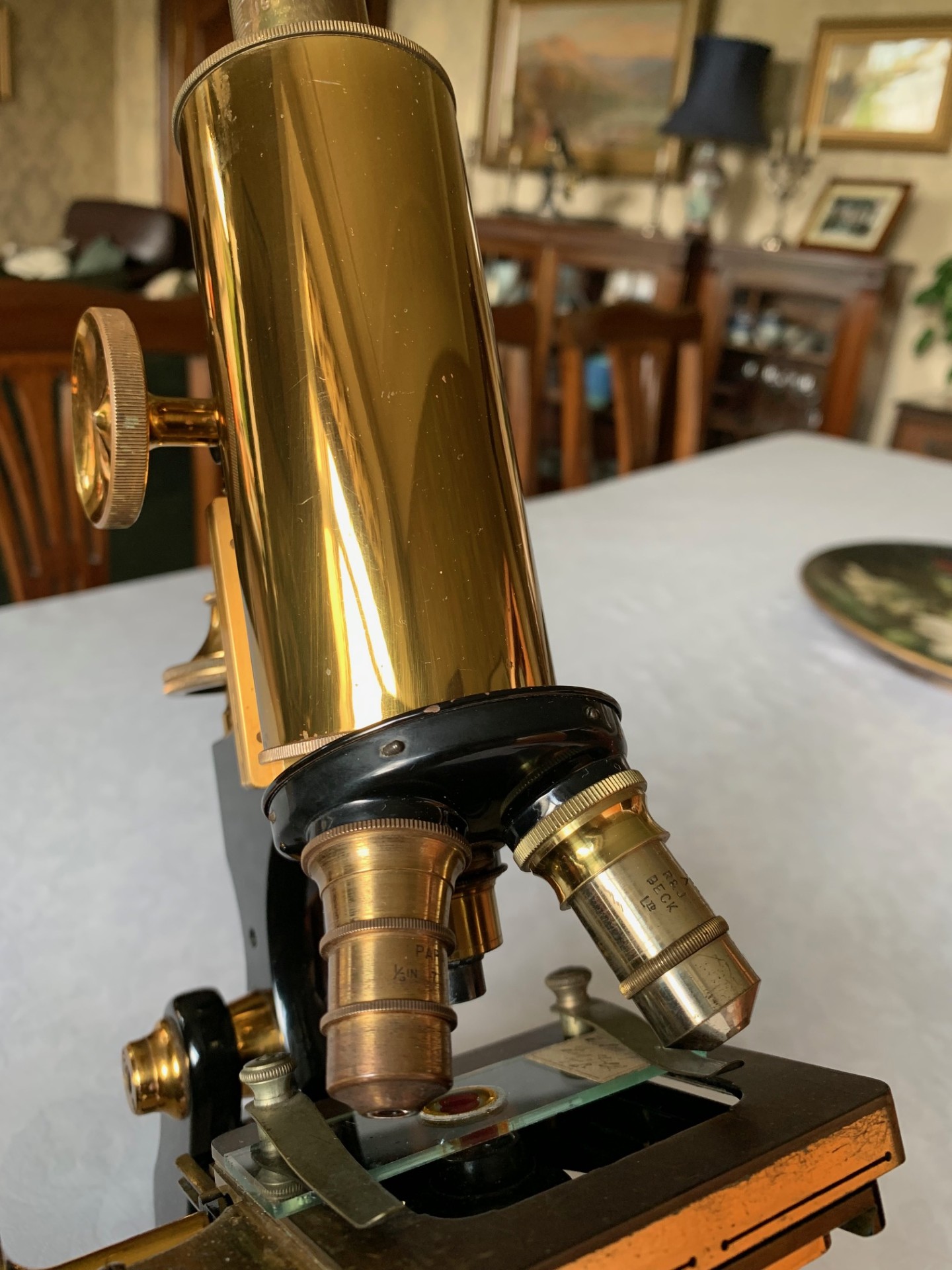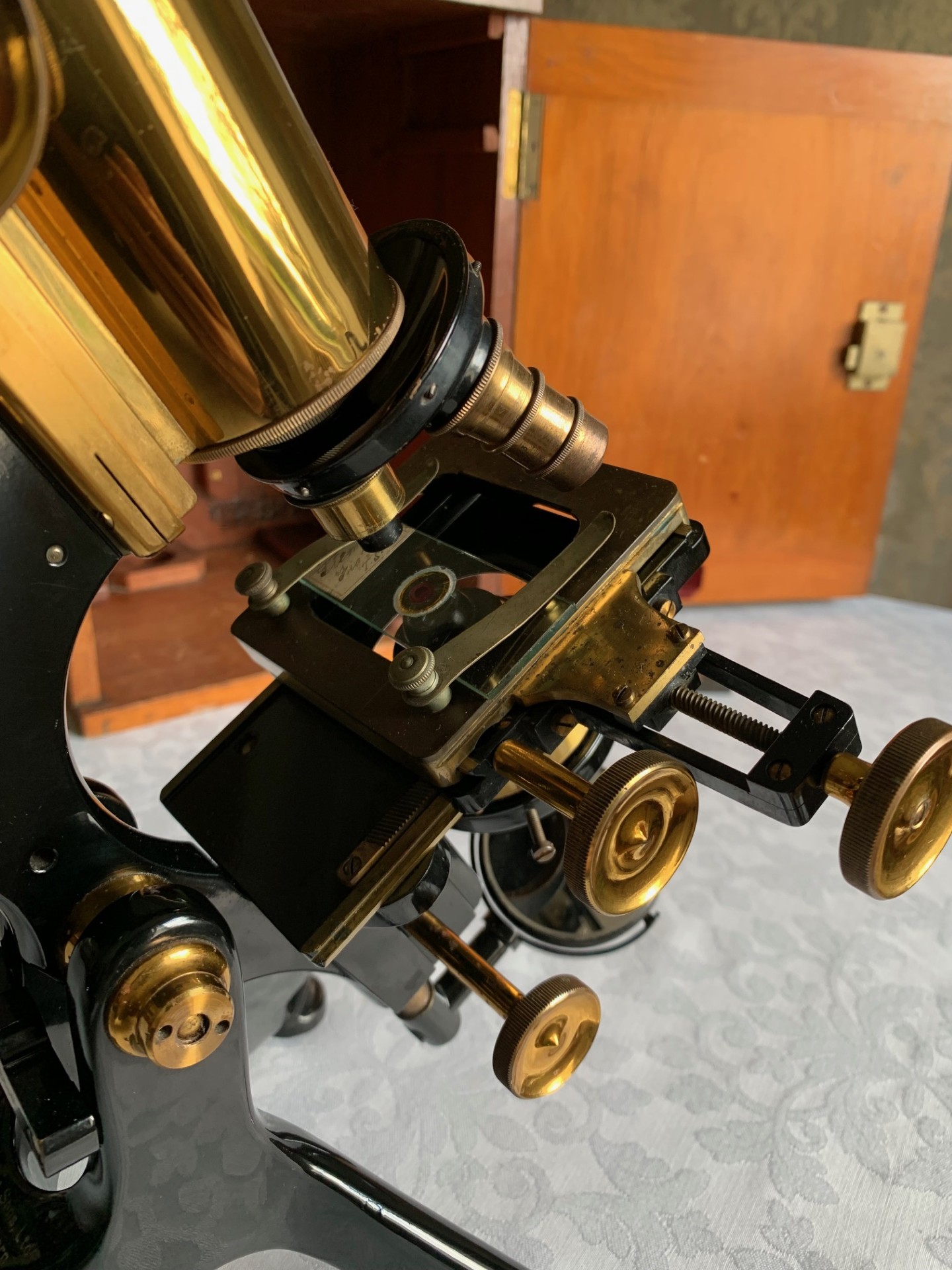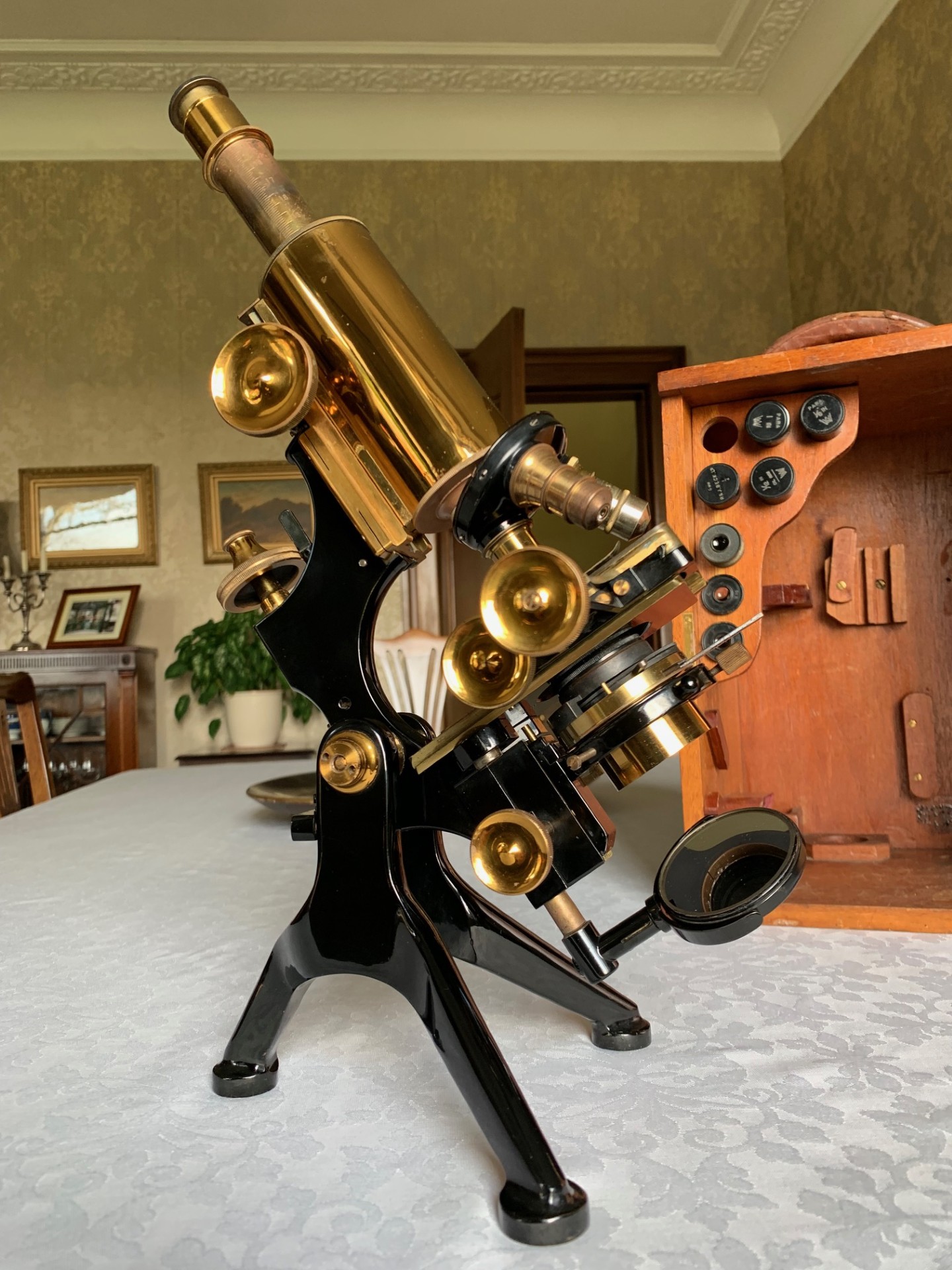SOLD – Vintage W. Watson & Sons Ltd – Edinburgh-H Brass Microscope – circa 1926, Cased
Sold
Exceptionally good cosmetic condition example of Watson's popular Edinburgh-H model with an over-size main optical tube and near-perfect lacquer-work - a rare find in this condition. This is fairly a late model Edinburgh-H dating to around 1926.
Circa
1926
Maker
W. Watson & Sons Ltd
Country of manufacture
UK and Ireland
Description
Offered for sale is an extremely well presented example of Watson’s Edinburgh Student’s Stand-H model microscope in brass – it’s a late model example and dates to 1926 based on its serial number 38121 with its correct original case. This is a quite exceptionally good cosmetic example with very little wear and lacquered brass-work that’s retained virtually all its condition, which is pretty remarkable considering the instrument’s age at 99 years and counting. I hope that the listing photos do the instrument justice and showcase its stunning museum-quality visual appeal.
The Edinburgh pattern model of microscope was produced by Watson between 1887 and around 1945; its long production run giving us a firm clue regarding just how good this model of microscope was in its heyday and over that long production cycle Watson regularly updated and improved the model, so what you see here is a fairly late example with many of the final iterations of design and development for this model. For example it’s got the later more upright brass tripod, the stage is now attched to the limb and tailpiece, the rotating plate to the top of the stage has been dropped as has the useful feature of the mirror on a swinging support arm and there’s a new swing-out mechanism for the sub-stage. The Edinburgh stand was originally developed by Watson in collaboration with a professor and lecturer in bacteriology at the University of Edinburgh, hence the Edinburgh designation. With its signature rear cross-member giving that classic “H” look and nice lacquered brass-work, the Edinburgh H is a fine example of British optical engineering with a design and style essentially dating back to the Victorian era.
Turning to the technical details, the instrument stands on a cast brass tripod foot with twin uprights supporting the pivot, with tension lever adjustment and Lister-limb arrangement. The coarse focus is via rack and pinion with good smooth action that holds in position on adjustment and it’s interesting to see that the coarse focus has tension adjustment available. Fine focus is operated via a separate brass thumb-wheel located at the rear of the upper limb which operates an internal lever system acting against sprung resistance. The focusing technique being to achieve near focus with the coarse thumb-wheels, then fine-tune with the single rear thumb-wheel, which only has a fairly small range of movement via its vernier screw mechanism.
With the optics, this Watson microscope comes fitted with a period graduated brass eyepiece draw-tube inside a brass main over-size optical tube and there’s four vintage eyepieces mainly by Watson that with adequate illumination produce very good images:
– No. 1B – 5x magnification (Leitz)
– No. 2 – 6x magnification – Watson
– No. 2 micrometer – 6x magnification with vertical 1-10 graticule – Watson
– No. 4 – 10x magnification – Watson
It’s also got four period objectives and a Watson triple turret which rotates freely with a nice positive feel as the objectives align to the viewing position. The objectives are as follows:
– 1 inch – 6x magnification – Watson
– 1/4 inch in brass – R & J Beck – 25x magnification
– 1/6th inch in brass – Watson – 40x magnification
– 1/12th inch – Watson – 100x magnification and oil immersion is required
(the objectives have their correct period brass canisters)
Overall therefore, the range of magnification available with this Watson ranges from about 30x with the lowest power lens combination, up to around 1,000x with the highest power combination and use of oil immersion techniques.
Being a late model Edinburgh-H, the upper limb has an extended tail-piece to which are attached the stage and the sub-stage fittings. The fully mechanical stage is an original Watson design in brass with twin thumb-wheel adjusters on the right hand side of the stage that have just the right feel and give excellent x/y sample movement. It’s fitted with its original brass specimen clips for holding slides steady during inclined viewing and when the axes are being moved around. The freely running x/y controls also offering fine control of specimen positioning, which is a real advantage for higher magnification work. The y-axis also holds position on inclination.
Turning to the sub-stage, we have a Watson Abbe-type condenser in a swing-out mount with centering controls comprising brass thumb-screws (one is a replacement), which sits in a height adjustable rack and pinion mount with single-sided brass thumb-wheel to adjust the height. The condenser assembly also has a working iris to control lighting levels and there’s a 35mm swing-out filter carrier for adding coloured, opaque or dark-field filters. Lighting is via a plano-concave mirror on a rotation/height-adjustable brass support rod with gimbal giving good adjustability, with period silvering that’s in very good condition to both sides. The rod locates to the underside of the limb tail-piece.
The instrument’s controls and friction surfaces have been very lightly lubricated and operate smoothly with a nice feel and there’s very little in the way of age-related signs of wear to all moving parts and friction surfaces. This instrument presents very very well with lovely gleaming brass-work showing few signs of tarnishing and spotting which is remarkable given its age. This indicates to me that the instrument has obviously been very well looked after throughout its life and it’s in excellent shape for an inter-war example. This is essentially a perfect collectible Watson Edinburgh Stand-H model in the right condition for a collector or connoisseur – it’ll make a great usable and display item and is offered at an attractive price point for an antique Edinburgh-H model of this age in this condition. It also presents really well while being used as a desk-top instrument and will also display rather nicely in a library or home office setting. If any of my previous customers are interested in acquiring a Watson Edinburgh stand, well it doesn’t get much better than this example.
Accessories:
– micrometer eyepiece with draw-tube and 1-10 vertical graticule
– stage micrometer – 0.01 and 0.001 inches
There’s an original Watson storage case with this example with a nice exterior finish and good period sheen. It’s got a metal/leather carry-handle (showing some age), internal lens racking and a working lock and key, so complements the microscope perfectly.
Owing to the weight and delicacy of this antique Edinburgh-H microscope and its case, it will be partially dismantled, very well wrapped for shipping and dispatched by insured courier upon receipt of cleared funds.
Thanks for looking.
Ask the Dealer
Dealer information
 Arcboutant Scientific
Arcboutant Scientific
Howard Nutton based in Glasgow Scotland with a background in Natural Science along with previous career in risk management. I obtained my first antique microscope in 1988 - it was a Watson Edinburgh model H serial number 23604 - dating it to 1918. Since that time I've owned and restored hundreds of similar instruments. As Arcboutant Scientific now also making available personally curated fine examples, principally of antique microscopes and associated scientific equipment by quality English and Continental makers, to collectors world-wide.




